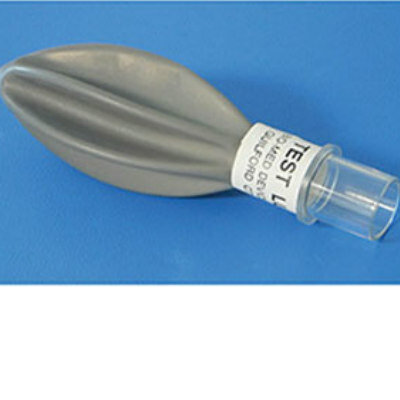New Diagnostic Tool Identifies and Treats COVID-19 Patients at Serious Risk of Developing Cytokine Storm
|
By HospiMedica International staff writers Posted on 02 Oct 2020 |

Illustration
Researchers have developed a new clinical tool to accurately identify and diagnose COVID-19 patients who are at high risk of developing a serious inflammatory condition that can damage the lungs and other organs.
Researchers at Intermountain Healthcare (Salt Lake City, UT, USA) have developed the new tool which is a diagnostic clinical score that is used to determine whether patients with the virus are at increased risk of developing the condition, known as hyperinflammatory syndrome, also sometimes referred to as a “cytokine storm.” This condition causes the immune system to react in an inappropriate and excessive way causing damage to organs. Diagnosing this hyperinflammatory syndrome is very important. With the new scoring diagnostic criteria, clinicians can now identify patients early and ideally prescribe treatments before the condition progresses and causes patients to deteriorate to critical levels.
For the study, researchers applied the new cHIS diagnostic score to 299 patients admitted to Intermountain hospitals with severe COVID-19. They found that that the criteria accurately identify patients who are at high risk for deteriorating clinically and requiring high oxygen supplementation, going on the ventilator or dying. Researchers also found that COVID-19 patients with elevated cHIS criteria were four times more likely to progress to need the ventilator for respiratory support.
“The prognostic value of the cHIS score is important because it can help doctors identify patients who are at risk of progressing to much more severe disease before it happens,” said Brandon Webb, MD, an infectious diseases physician at Intermountain Healthcare and principal investigator of the study.
Samuel Brown, MD, a critical care physician at Intermountain and co-investigator on the study, says the knowing which COVID-19 patients who are vulnerable to hyperinflammatory syndrome, will also help enhance treatment in other ways.
“The cHIS score is also important in two other ways,” explained Dr. Brown. “First, it will help us to design clinical trials targeting the patients for whom new drugs are most likely to work, and secondly, it allows us to now tailor our treatment strategy to give the right drugs to the right patients who are most likely to benefit.”
Related Links:
Intermountain Healthcare
Researchers at Intermountain Healthcare (Salt Lake City, UT, USA) have developed the new tool which is a diagnostic clinical score that is used to determine whether patients with the virus are at increased risk of developing the condition, known as hyperinflammatory syndrome, also sometimes referred to as a “cytokine storm.” This condition causes the immune system to react in an inappropriate and excessive way causing damage to organs. Diagnosing this hyperinflammatory syndrome is very important. With the new scoring diagnostic criteria, clinicians can now identify patients early and ideally prescribe treatments before the condition progresses and causes patients to deteriorate to critical levels.
For the study, researchers applied the new cHIS diagnostic score to 299 patients admitted to Intermountain hospitals with severe COVID-19. They found that that the criteria accurately identify patients who are at high risk for deteriorating clinically and requiring high oxygen supplementation, going on the ventilator or dying. Researchers also found that COVID-19 patients with elevated cHIS criteria were four times more likely to progress to need the ventilator for respiratory support.
“The prognostic value of the cHIS score is important because it can help doctors identify patients who are at risk of progressing to much more severe disease before it happens,” said Brandon Webb, MD, an infectious diseases physician at Intermountain Healthcare and principal investigator of the study.
Samuel Brown, MD, a critical care physician at Intermountain and co-investigator on the study, says the knowing which COVID-19 patients who are vulnerable to hyperinflammatory syndrome, will also help enhance treatment in other ways.
“The cHIS score is also important in two other ways,” explained Dr. Brown. “First, it will help us to design clinical trials targeting the patients for whom new drugs are most likely to work, and secondly, it allows us to now tailor our treatment strategy to give the right drugs to the right patients who are most likely to benefit.”
Related Links:
Intermountain Healthcare
Latest COVID-19 News
- Low-Cost System Detects SARS-CoV-2 Virus in Hospital Air Using High-Tech Bubbles
- World's First Inhalable COVID-19 Vaccine Approved in China
- COVID-19 Vaccine Patch Fights SARS-CoV-2 Variants Better than Needles
- Blood Viscosity Testing Can Predict Risk of Death in Hospitalized COVID-19 Patients
- ‘Covid Computer’ Uses AI to Detect COVID-19 from Chest CT Scans
- MRI Lung-Imaging Technique Shows Cause of Long-COVID Symptoms
- Chest CT Scans of COVID-19 Patients Could Help Distinguish Between SARS-CoV-2 Variants
- Specialized MRI Detects Lung Abnormalities in Non-Hospitalized Long COVID Patients
- AI Algorithm Identifies Hospitalized Patients at Highest Risk of Dying From COVID-19
- Sweat Sensor Detects Key Biomarkers That Provide Early Warning of COVID-19 and Flu
- Study Assesses Impact of COVID-19 on Ventilation/Perfusion Scintigraphy
- CT Imaging Study Finds Vaccination Reduces Risk of COVID-19 Associated Pulmonary Embolism
- Third Day in Hospital a ‘Tipping Point’ in Severity of COVID-19 Pneumonia
- Longer Interval Between COVID-19 Vaccines Generates Up to Nine Times as Many Antibodies
- AI Model for Monitoring COVID-19 Predicts Mortality Within First 30 Days of Admission
- AI Predicts COVID Prognosis at Near-Expert Level Based Off CT Scans
Channels
Critical Care
view channel
Wearable Patch for Early Skin Cancer Detection to Reduce Unnecessary Biopsies
Skin cancer remains one of the most dangerous and common cancers worldwide, with early detection crucial for improving survival rates. Traditional diagnostic methods—visual inspections, imaging, and biopsies—can... Read more
Pulse Oximeter Index Offers Non-Invasive Guides for Fluid Therapy
In patients with acute circulatory failure, deciding whether to administer intravenous fluids is often a life-or-death decision. Too little fluid can leave organs underperfused, while too much can cause... Read moreSurgical Techniques
view channel
Robotic Assistant Delivers Ultra-Precision Injections with Rapid Setup Times
Age-related macular degeneration (AMD) is a leading cause of blindness worldwide, affecting nearly 200 million people, a figure expected to rise to 280 million by 2040. Current treatment involves doctors... Read more
Minimally Invasive Endoscopic Surgery Improves Severe Stroke Outcomes
Intracerebral hemorrhage, a type of stroke caused by bleeding deep within the brain, remains one of the most challenging neurological emergencies to treat. Accounting for about 15% of all strokes, it carries... Read morePatient Care
view channel
Revolutionary Automatic IV-Line Flushing Device to Enhance Infusion Care
More than 80% of in-hospital patients receive intravenous (IV) therapy. Every dose of IV medicine delivered in a small volume (<250 mL) infusion bag should be followed by subsequent flushing to ensure... Read more
VR Training Tool Combats Contamination of Portable Medical Equipment
Healthcare-associated infections (HAIs) impact one in every 31 patients, cause nearly 100,000 deaths each year, and cost USD 28.4 billion in direct medical expenses. Notably, up to 75% of these infections... Read more
Portable Biosensor Platform to Reduce Hospital-Acquired Infections
Approximately 4 million patients in the European Union acquire healthcare-associated infections (HAIs) or nosocomial infections each year, with around 37,000 deaths directly resulting from these infections,... Read moreFirst-Of-Its-Kind Portable Germicidal Light Technology Disinfects High-Touch Clinical Surfaces in Seconds
Reducing healthcare-acquired infections (HAIs) remains a pressing issue within global healthcare systems. In the United States alone, 1.7 million patients contract HAIs annually, leading to approximately... Read moreHealth IT
view channel
Printable Molecule-Selective Nanoparticles Enable Mass Production of Wearable Biosensors
The future of medicine is likely to focus on the personalization of healthcare—understanding exactly what an individual requires and delivering the appropriate combination of nutrients, metabolites, and... Read moreBusiness
view channel
Philips and Masimo Partner to Advance Patient Monitoring Measurement Technologies
Royal Philips (Amsterdam, Netherlands) and Masimo (Irvine, California, USA) have renewed their multi-year strategic collaboration, combining Philips’ expertise in patient monitoring with Masimo’s noninvasive... Read more
B. Braun Acquires Digital Microsurgery Company True Digital Surgery
The high-end microsurgery market in neurosurgery, spine, and ENT is undergoing a significant transformation. Traditional analog microscopes are giving way to digital exoscopes, which provide improved visualization,... Read more
CMEF 2025 to Promote Holistic and High-Quality Development of Medical and Health Industry
The 92nd China International Medical Equipment Fair (CMEF 2025) Autumn Exhibition is scheduled to be held from September 26 to 29 at the China Import and Export Fair Complex (Canton Fair Complex) in Guangzhou.... Read more
















